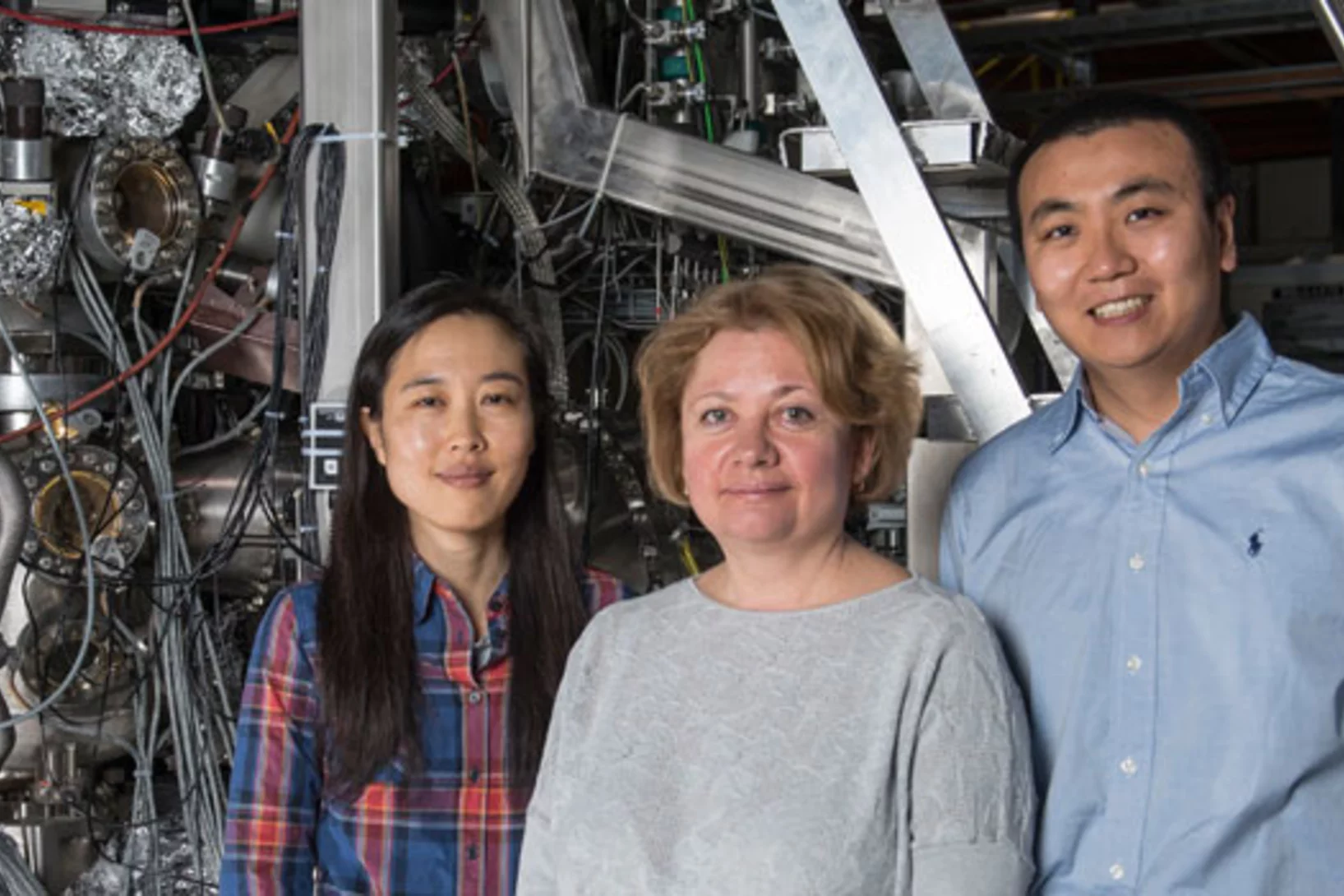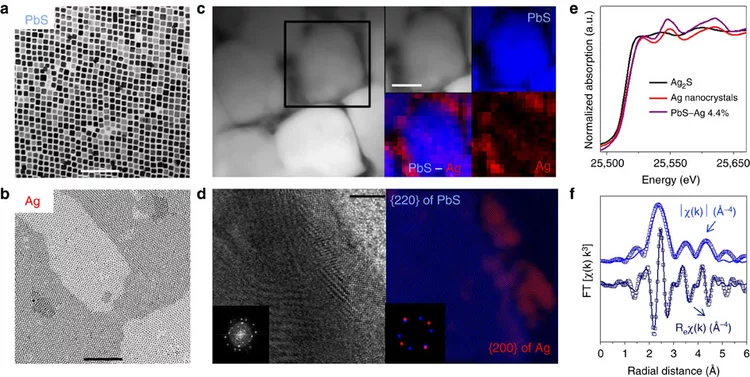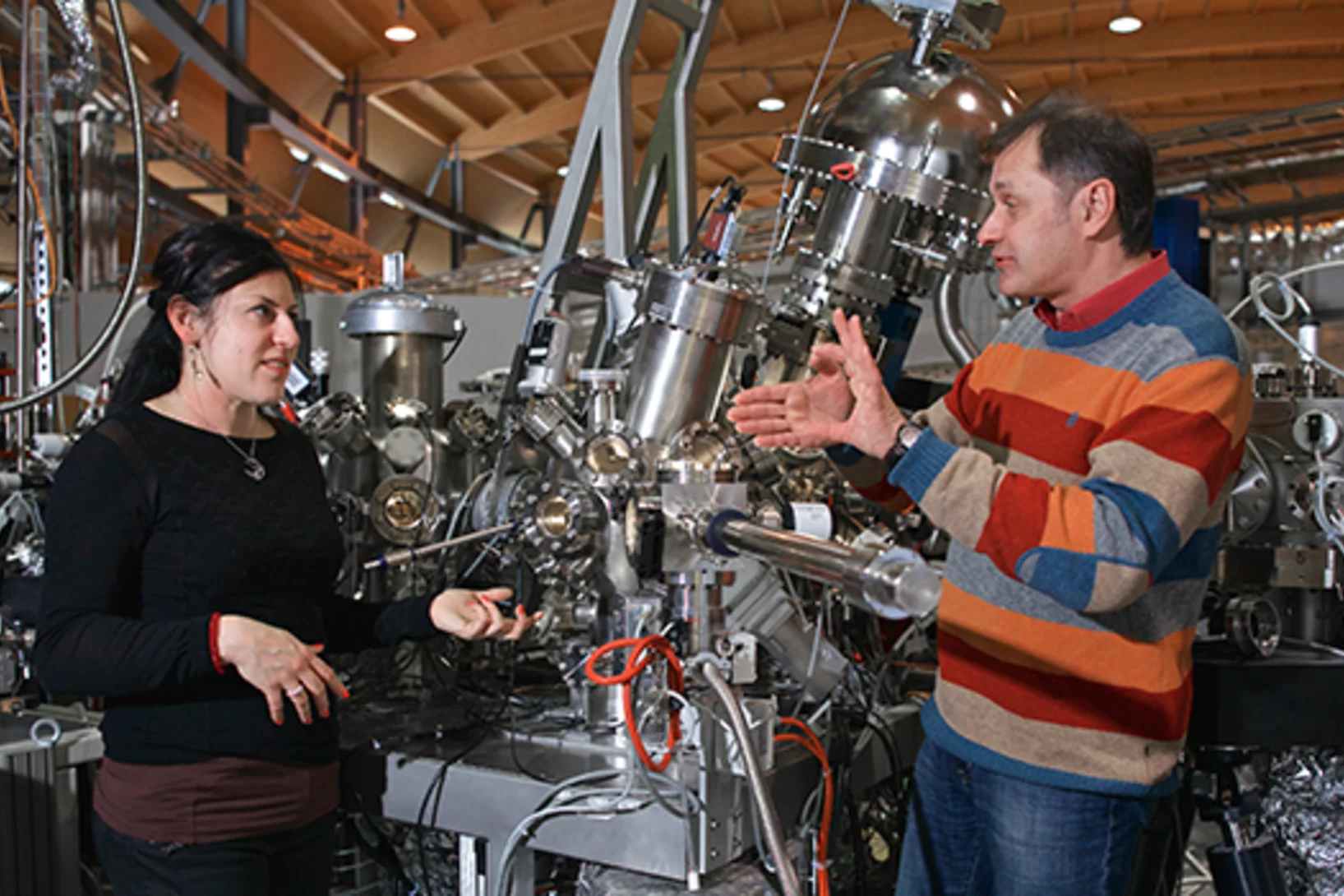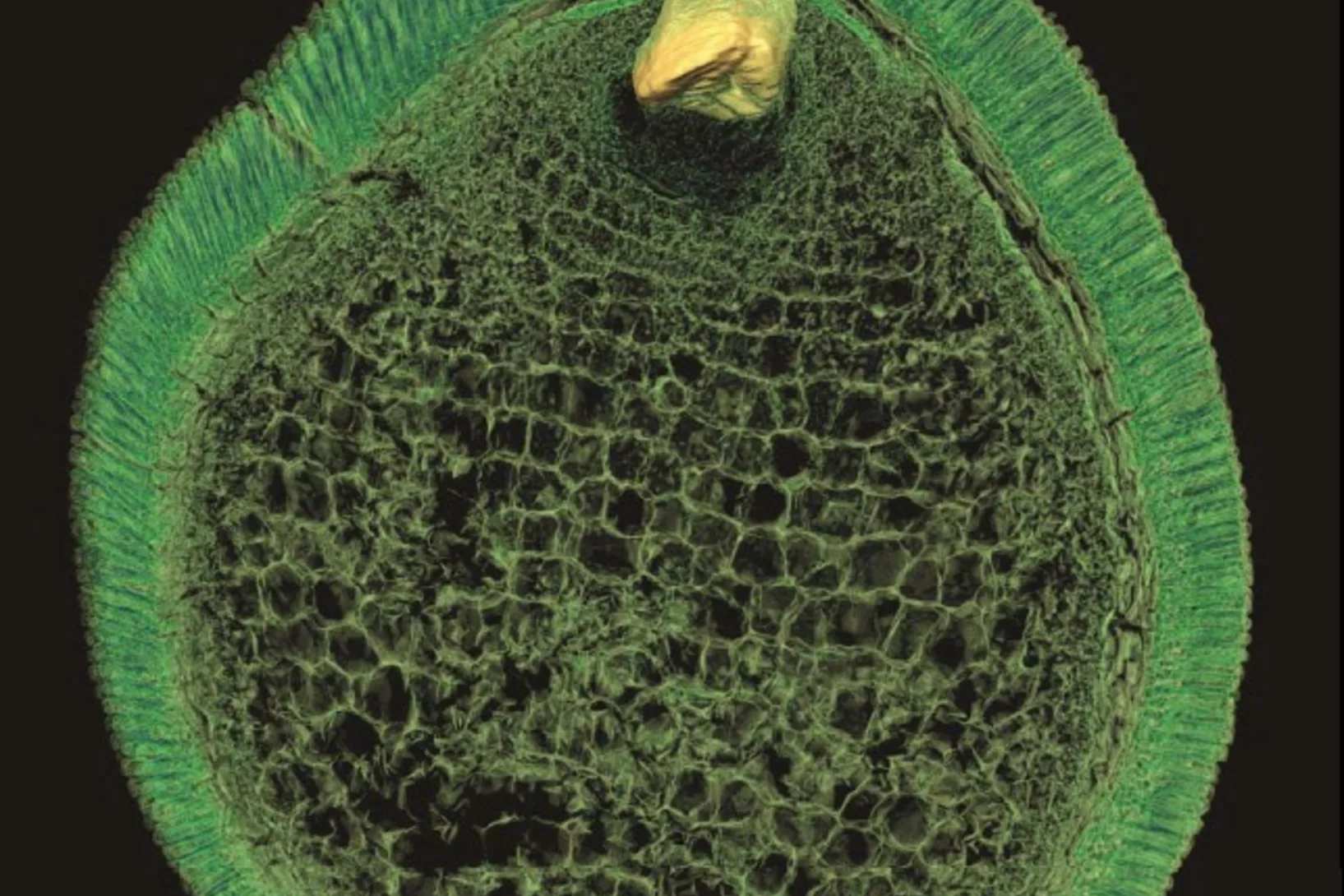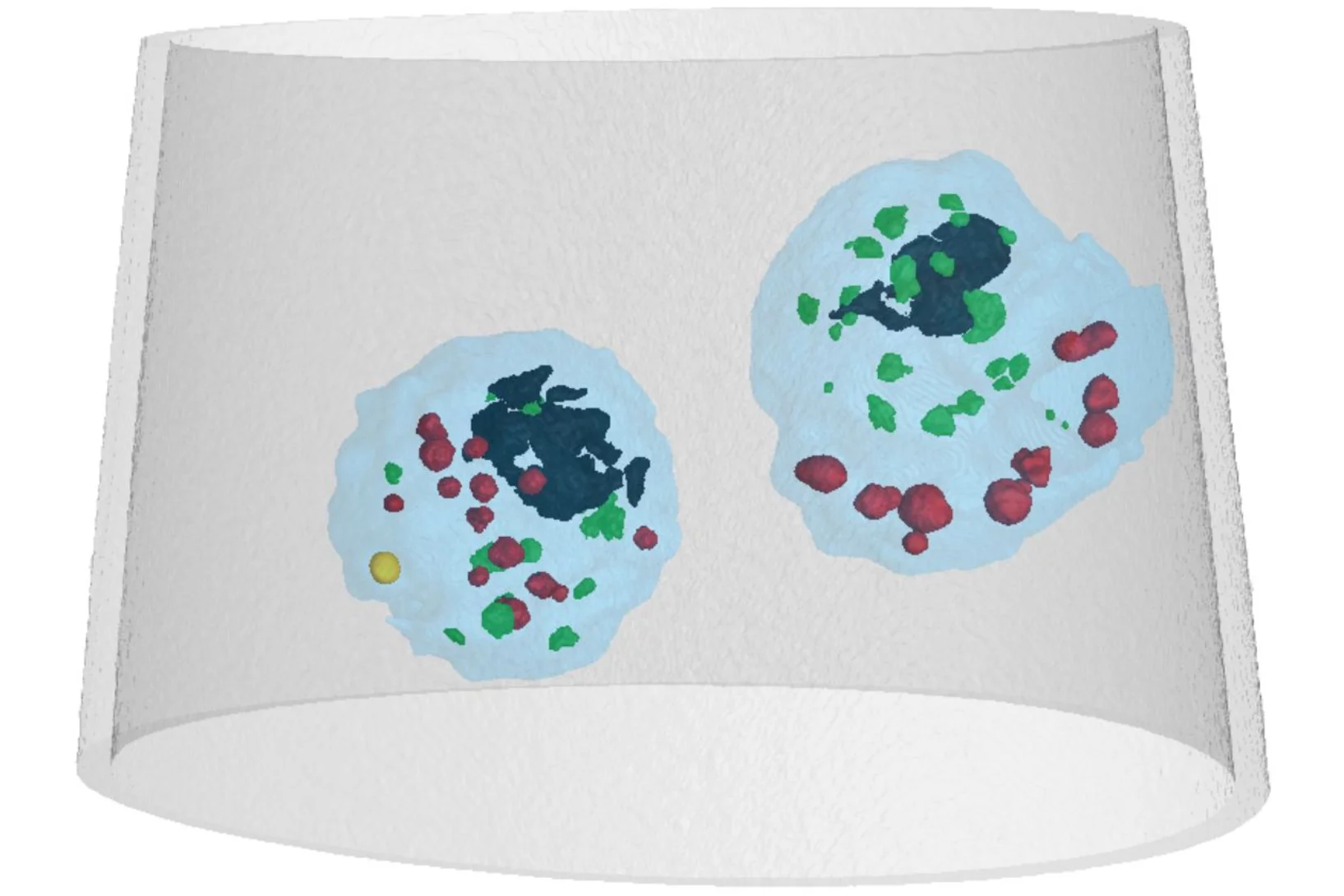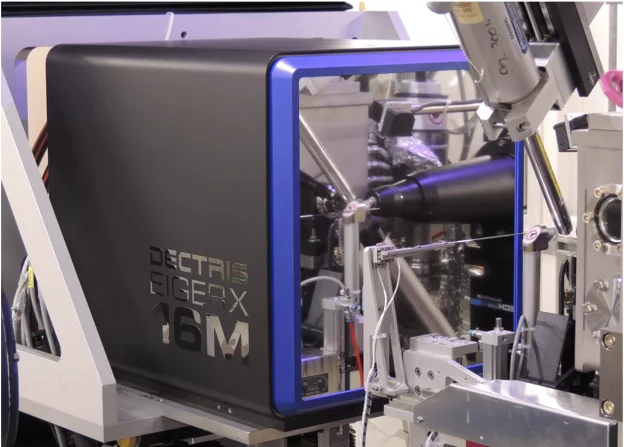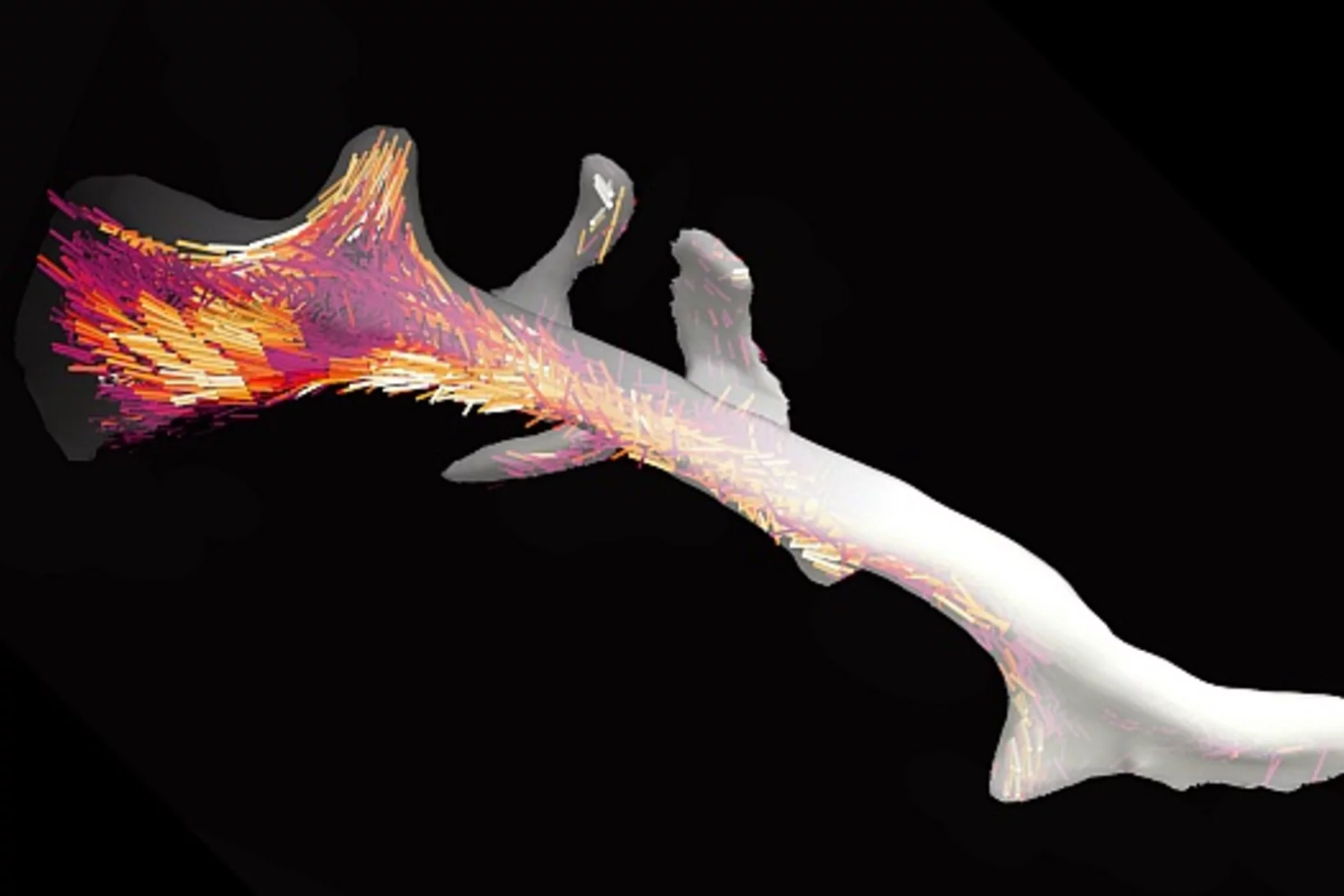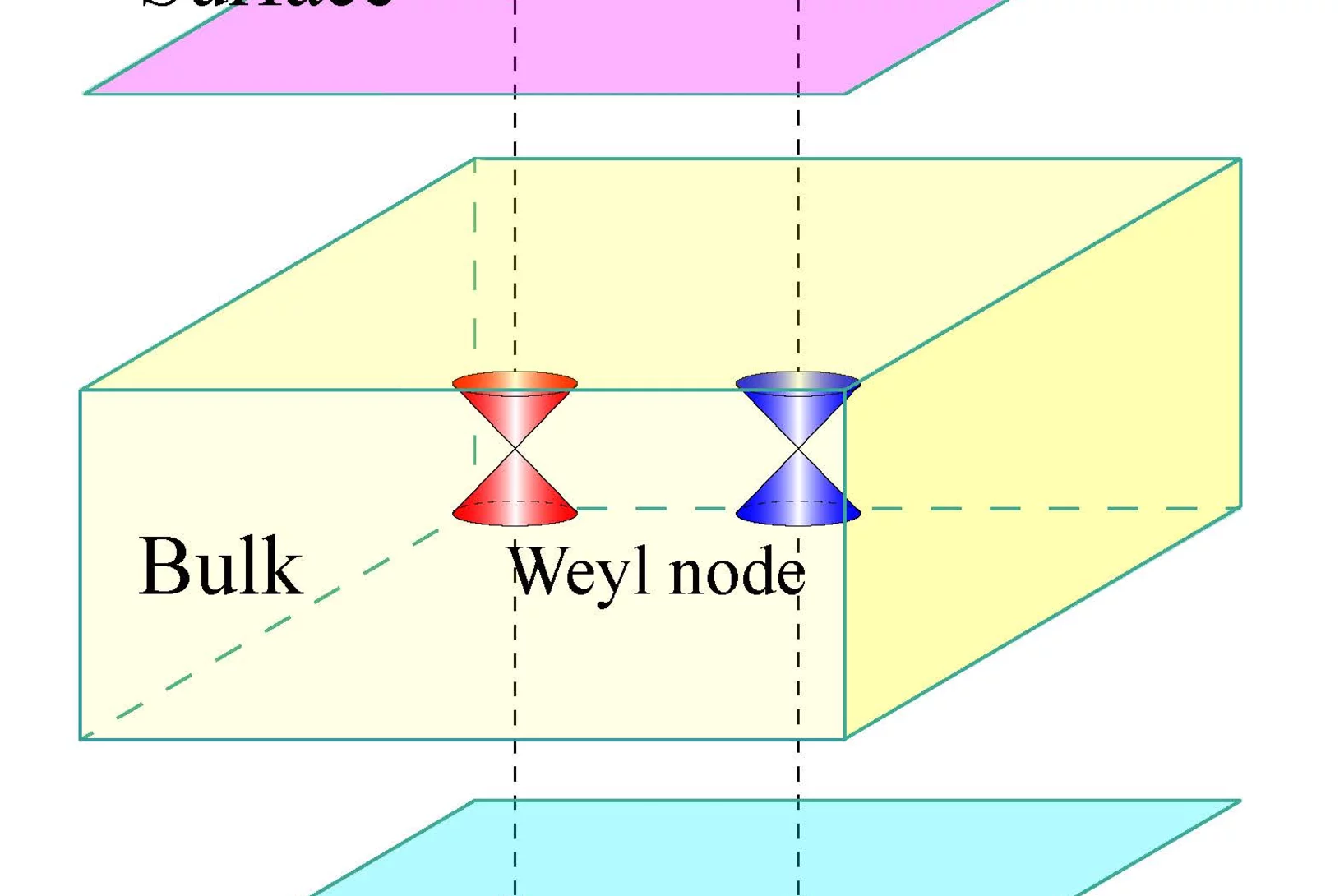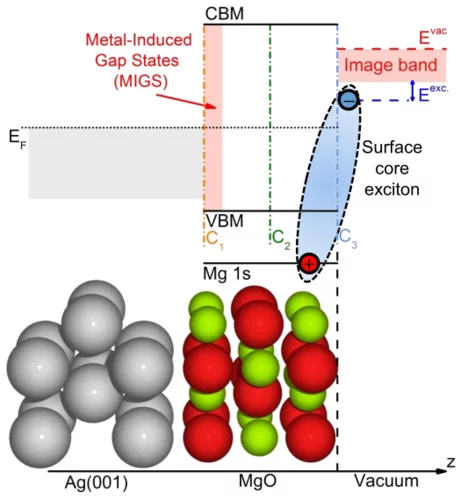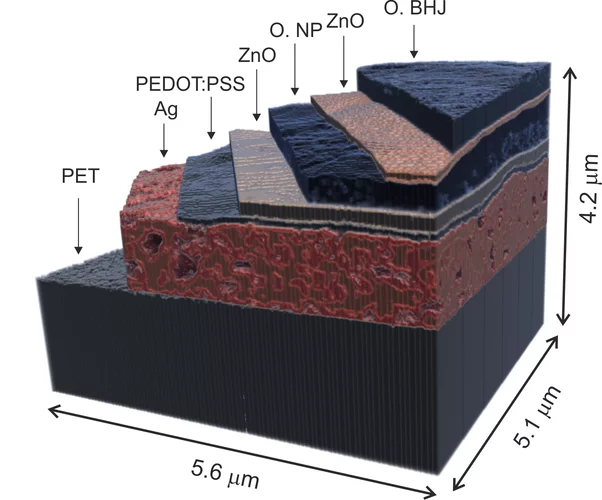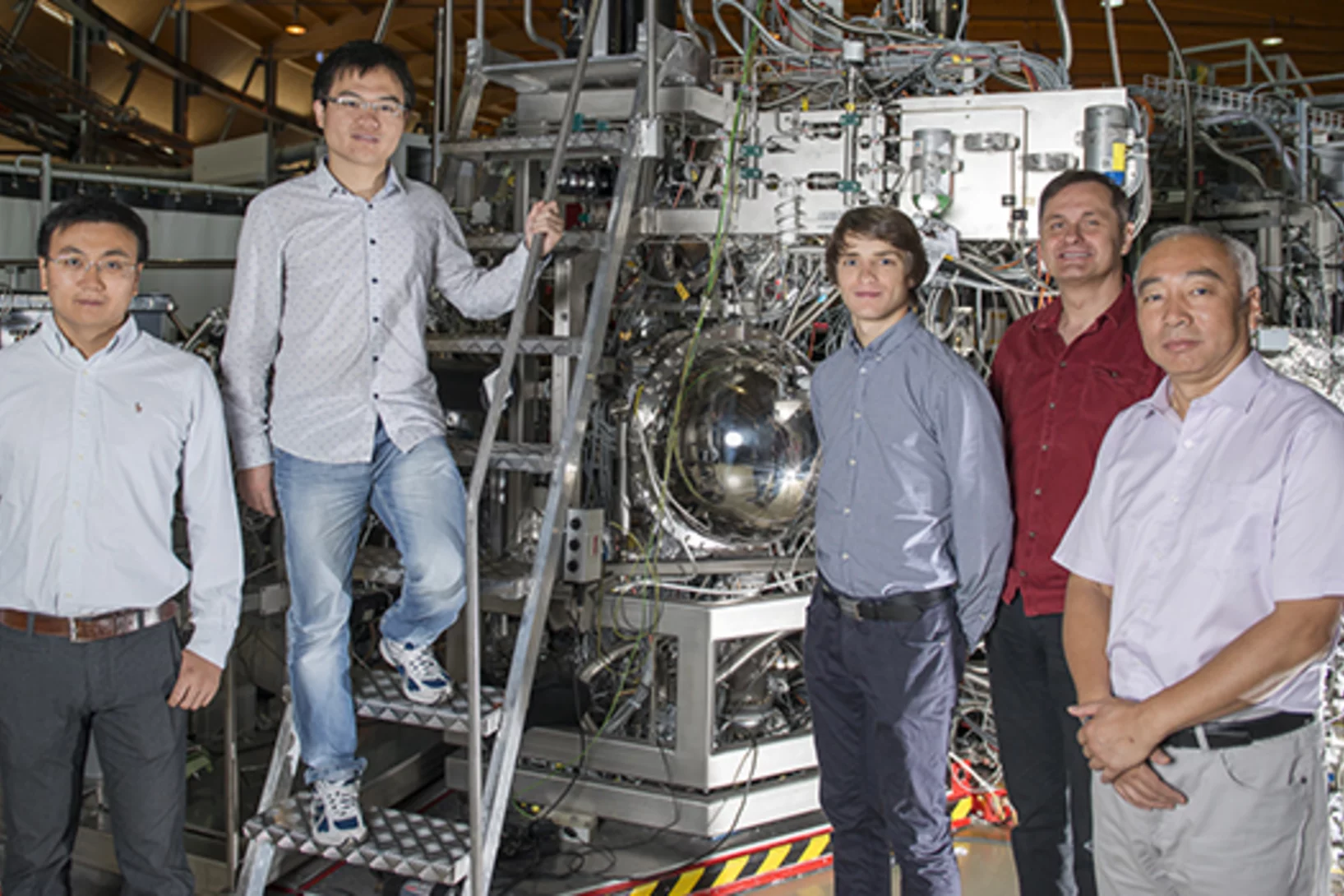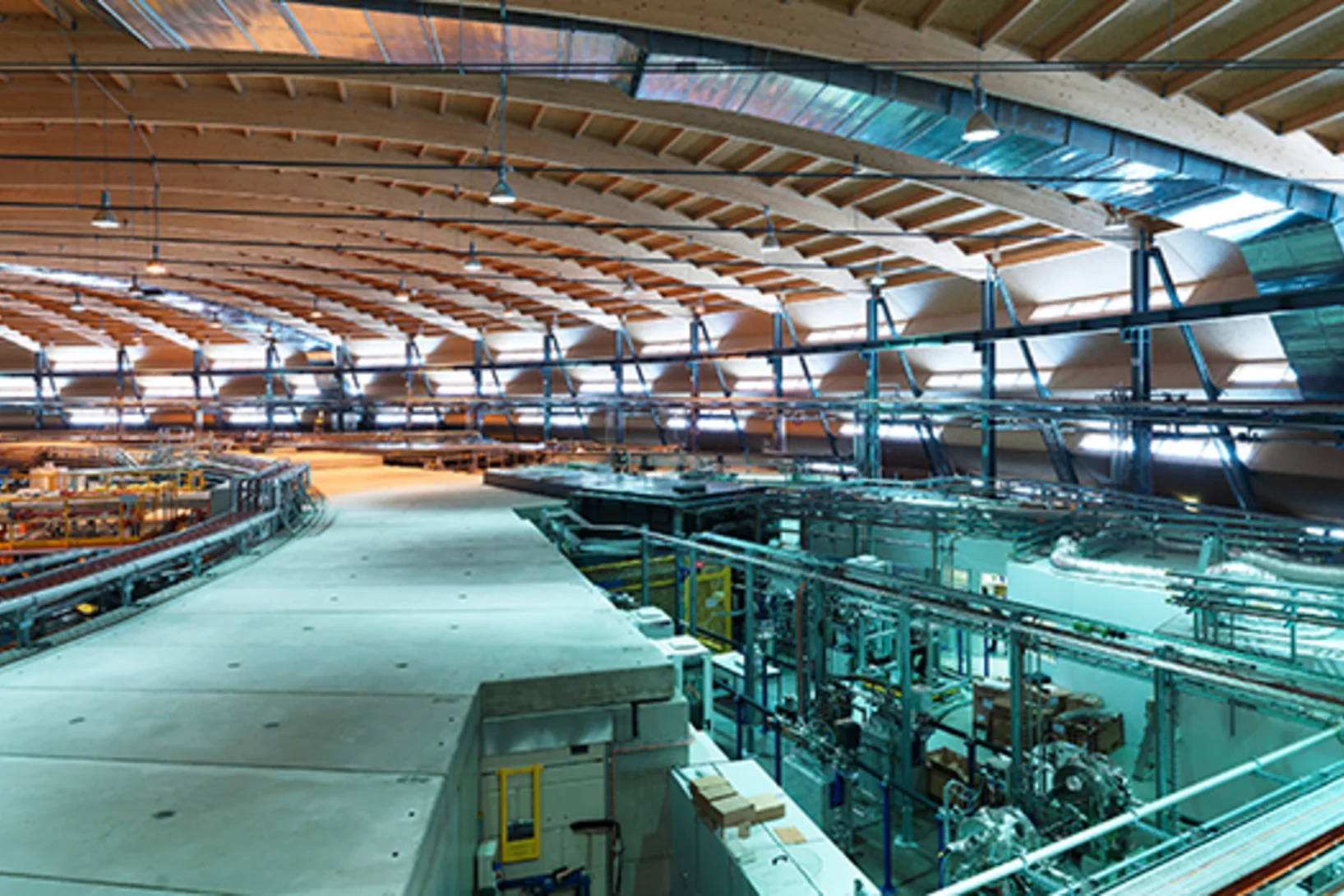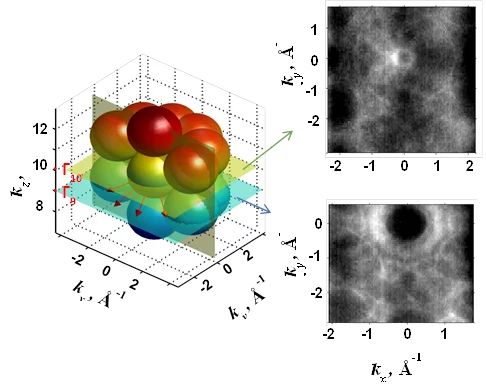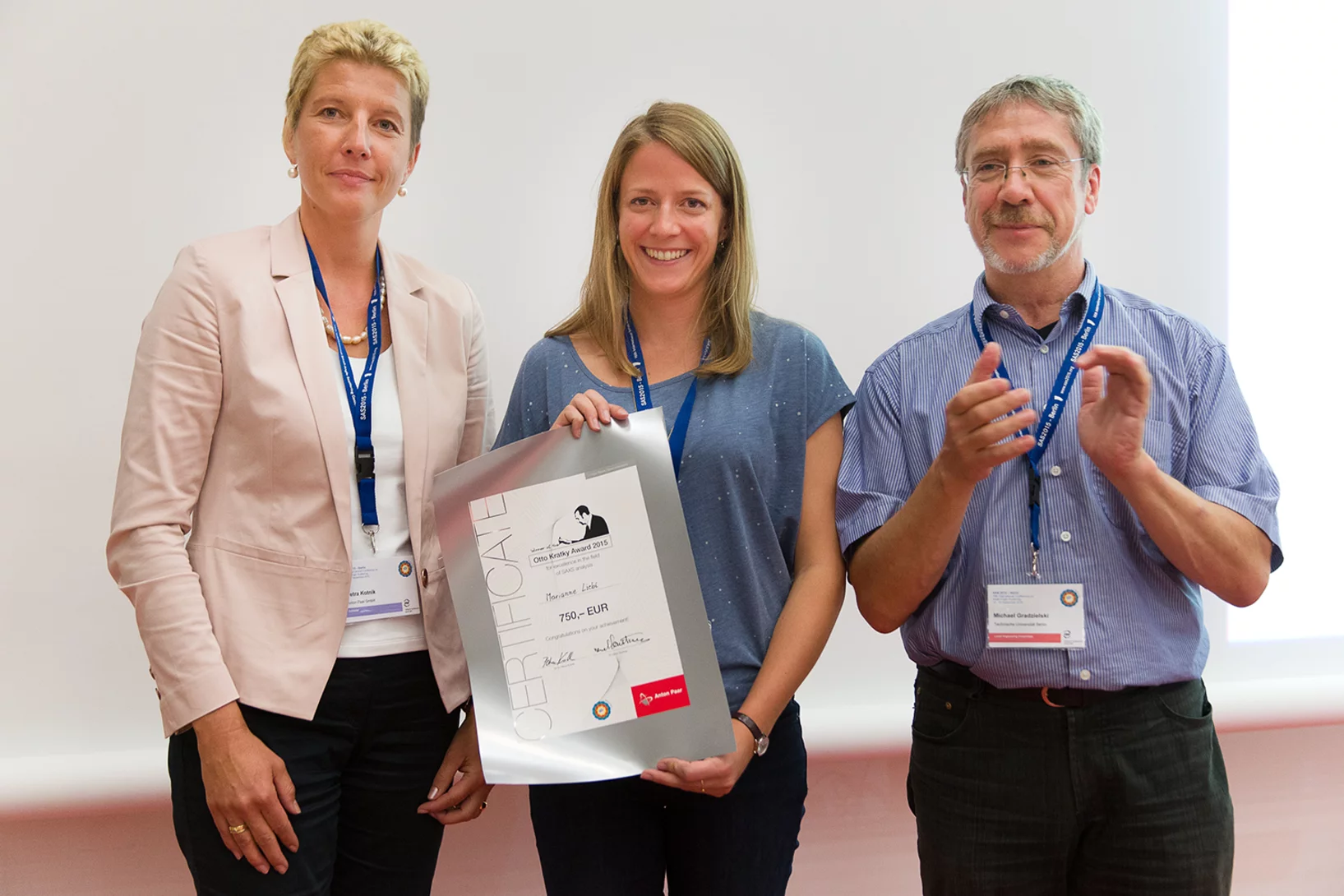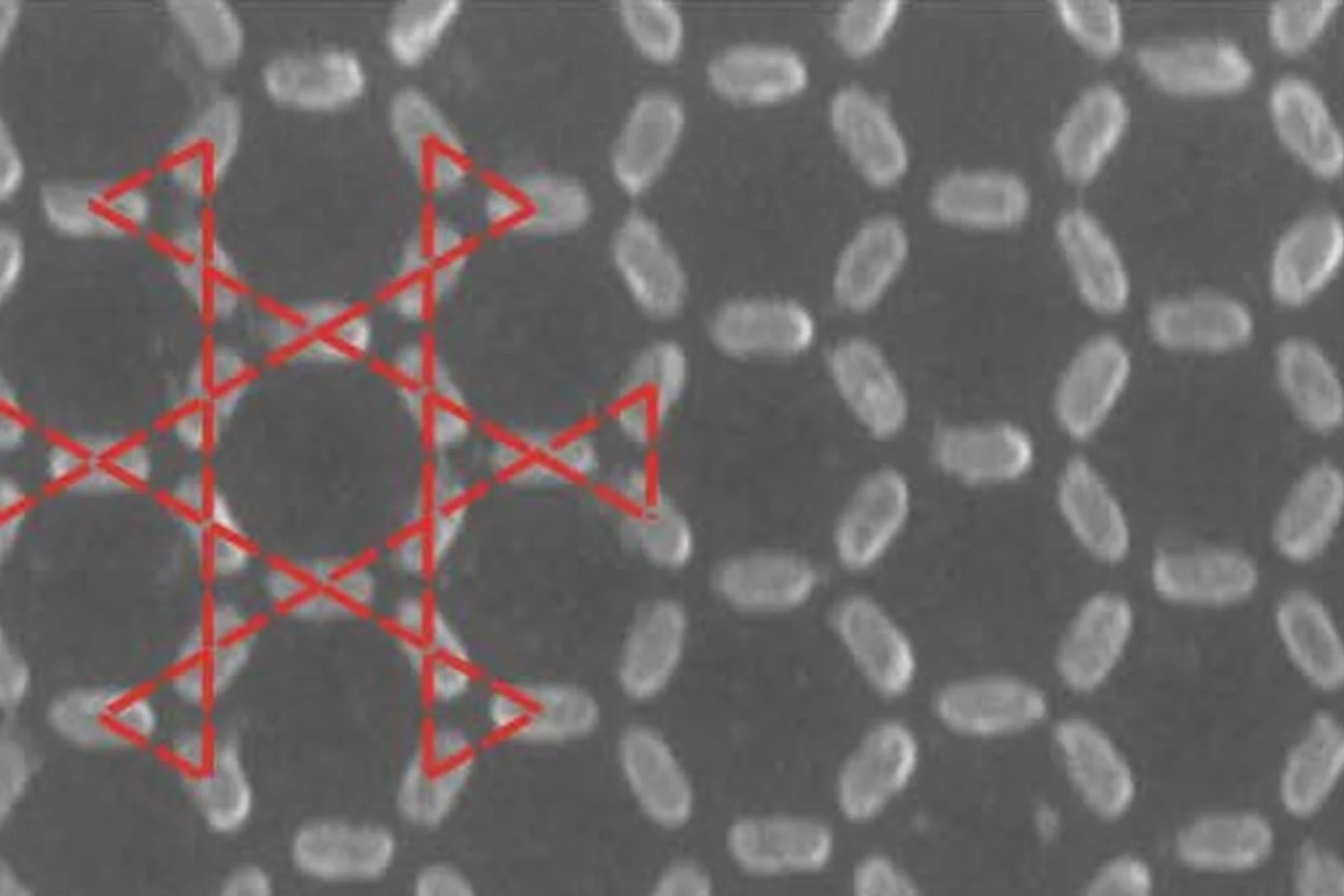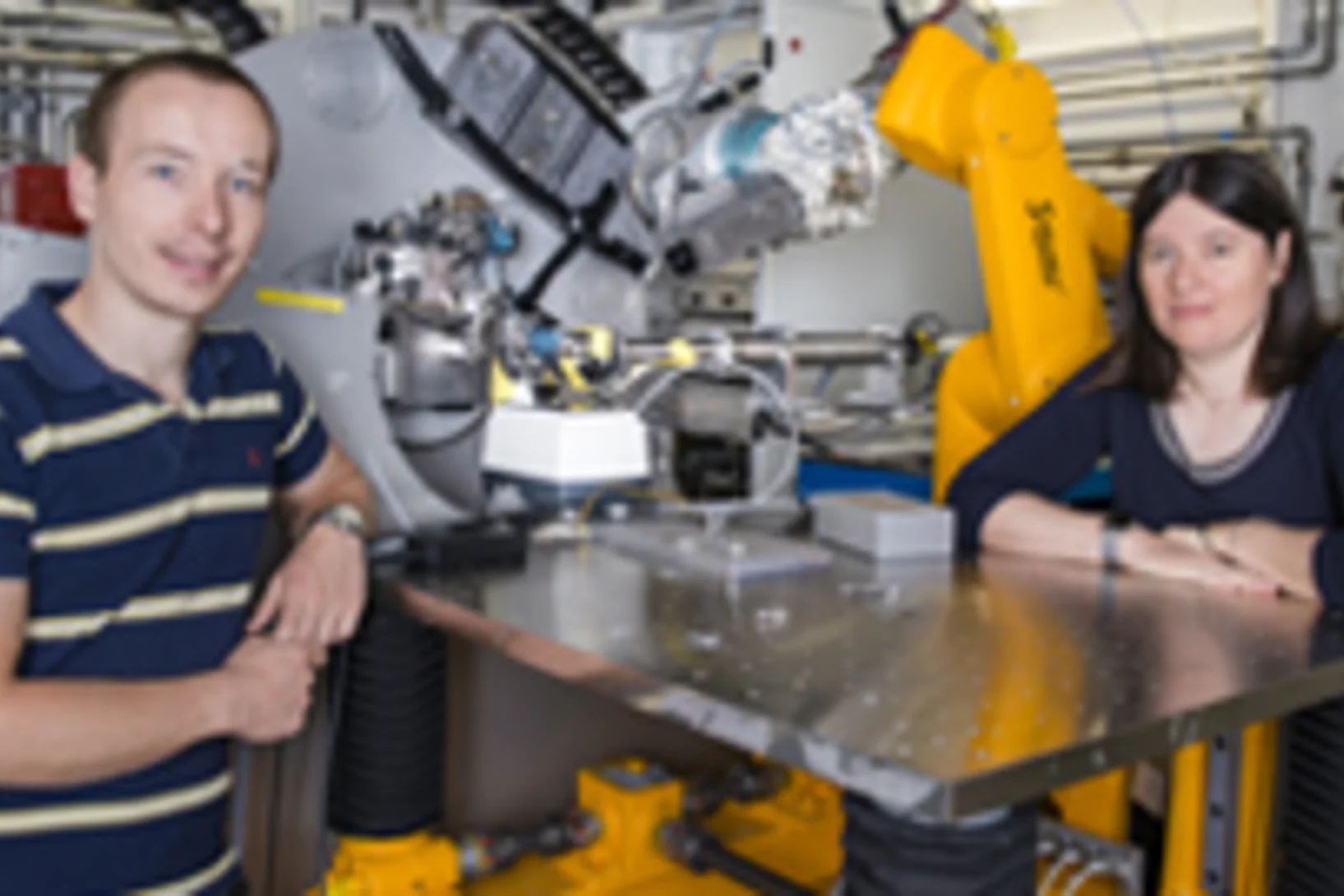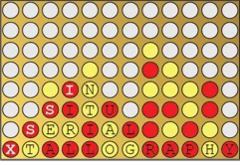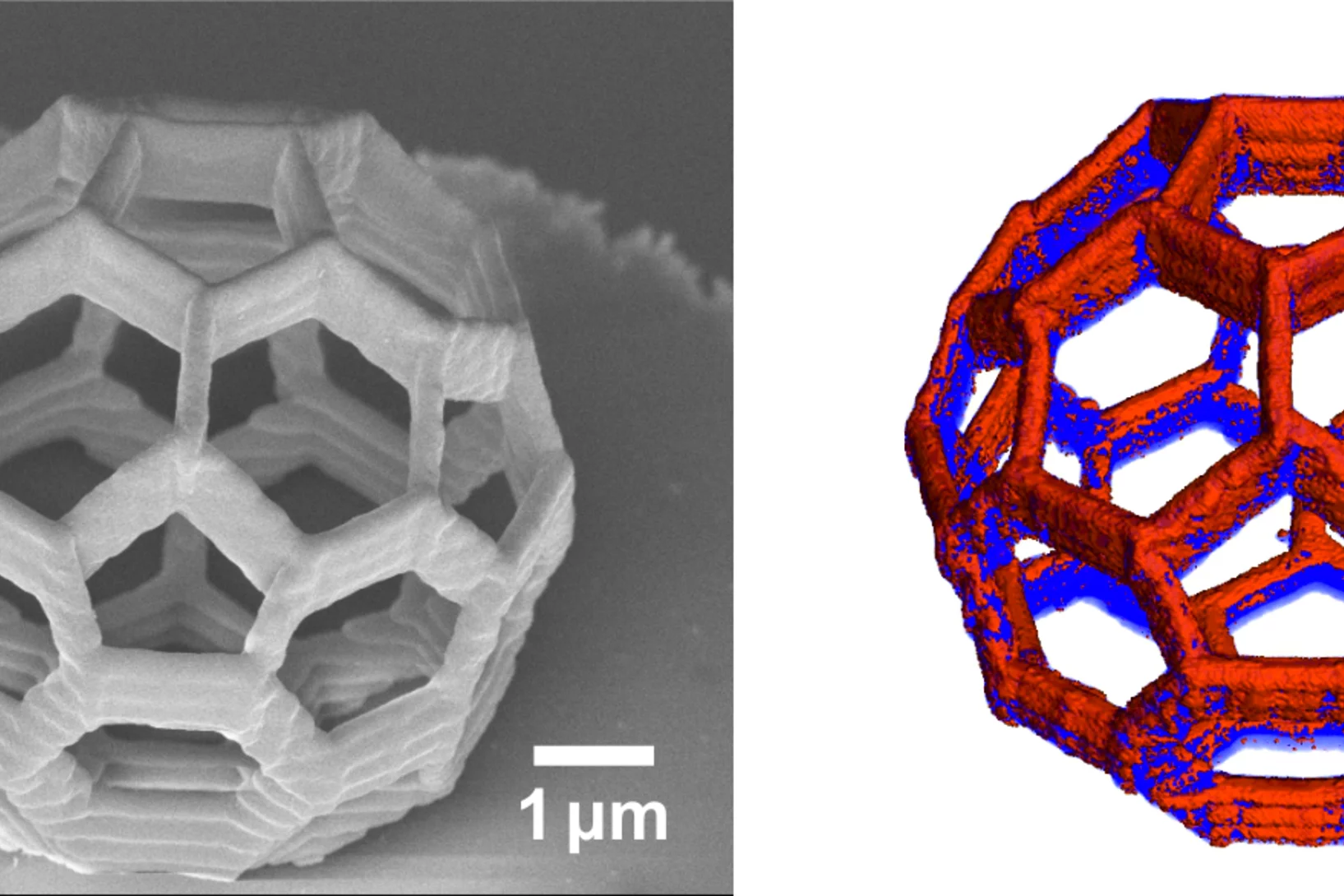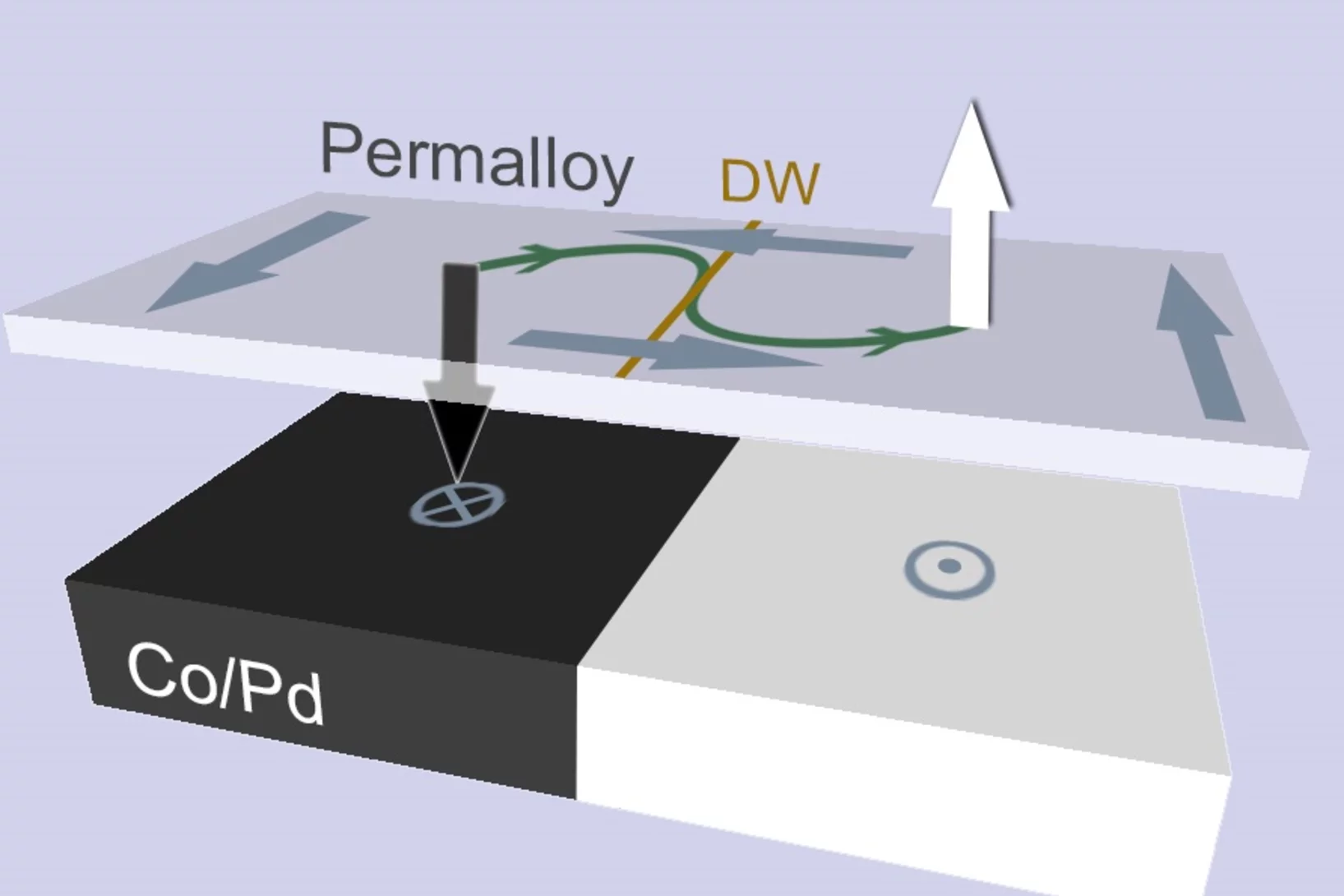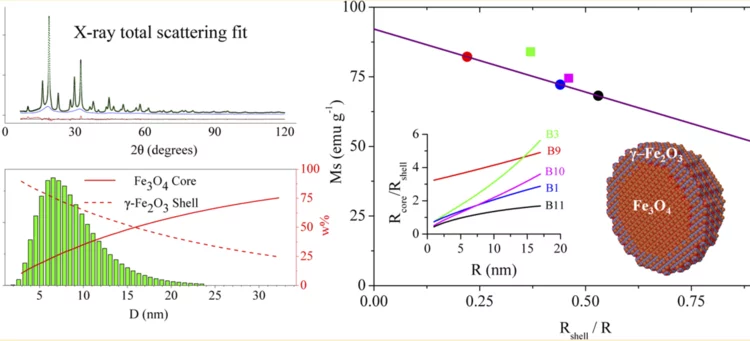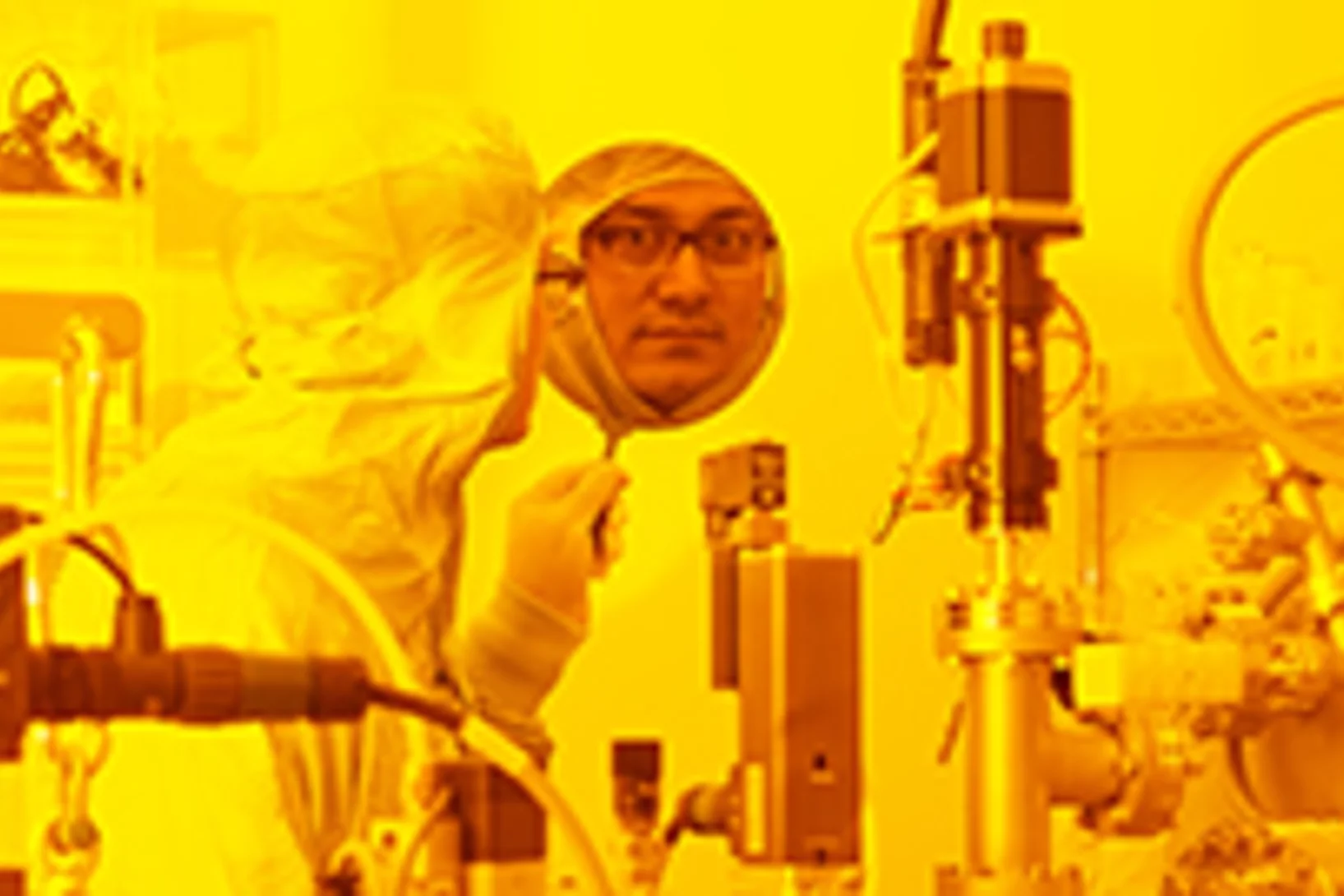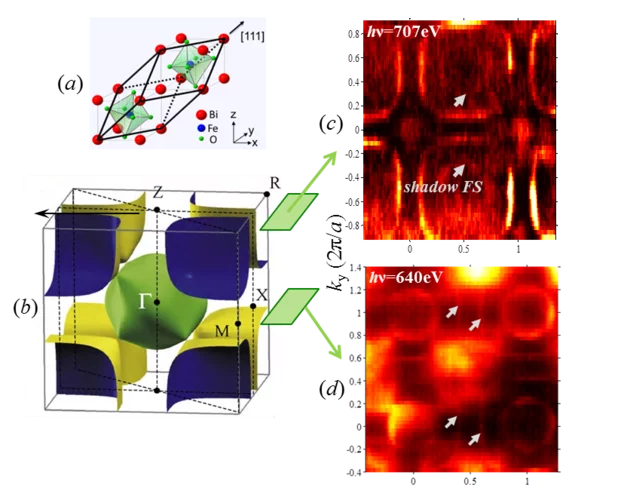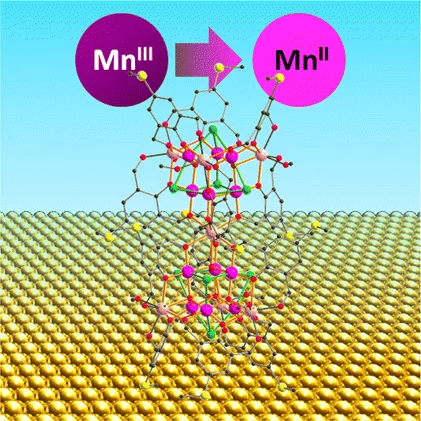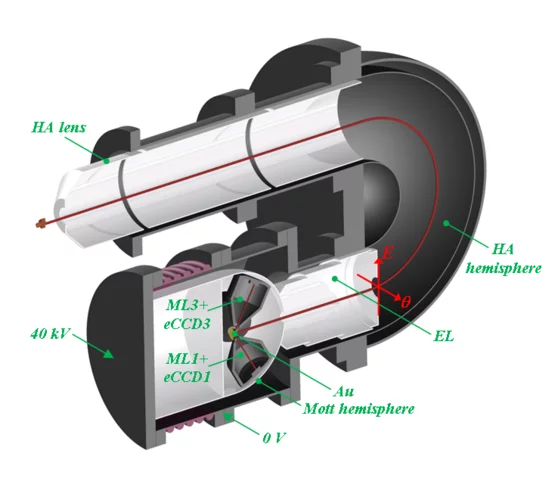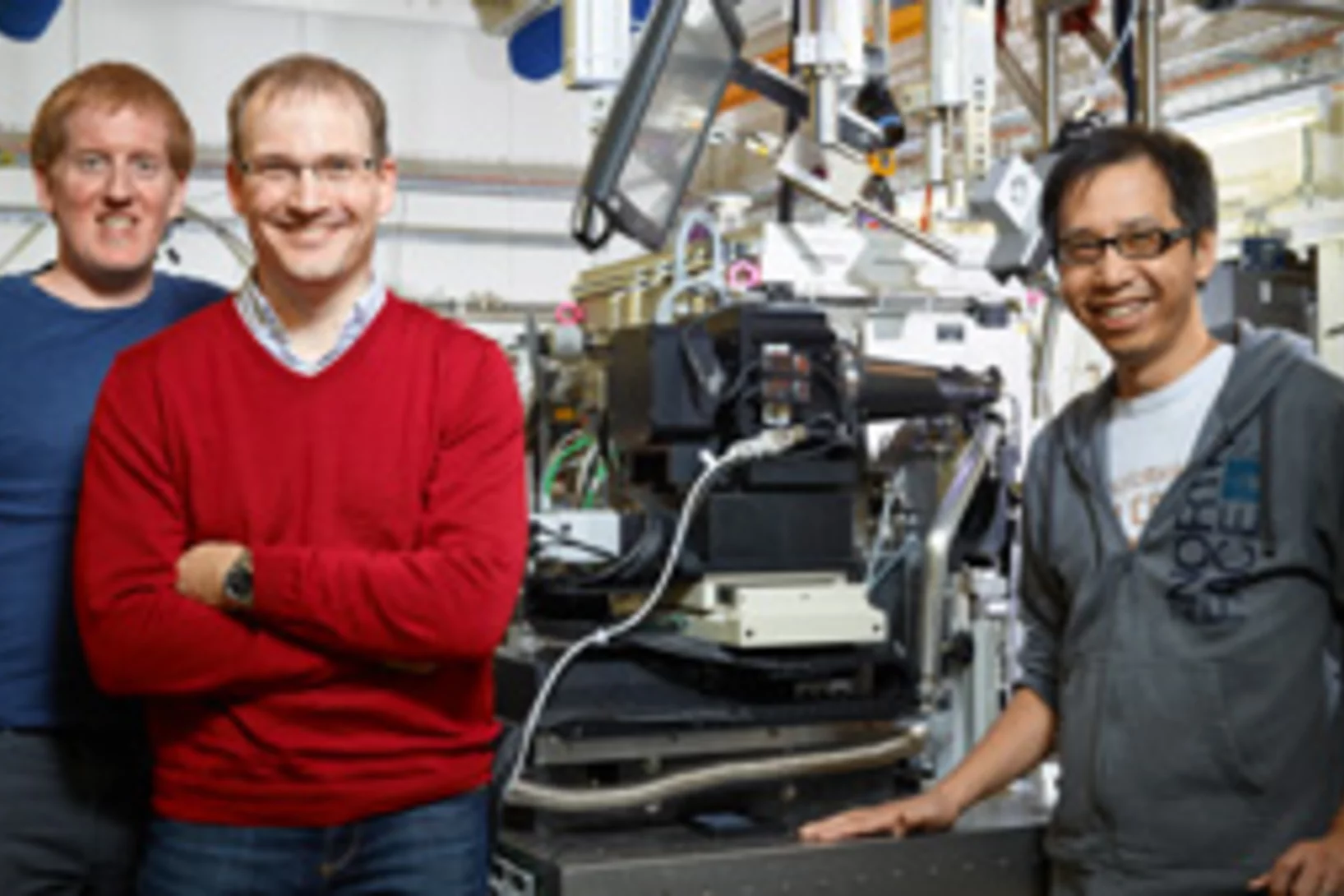Watching lithium move in battery materials
In order to understand limitations in current battery materials and systematically engineer better ones, it is helpful to be able to directly visualize the lithium dynamics in materials during battery charge and discharge. Researchers at ETH Zurich and Paul Scherrer Institute have demonstrated a way to do this.
Neues Teilchen könnte Grundlage energiesparender Elektronik bilden
Das erst im vergangenen Jahr entdeckte Weyl-Fermion bewegt sich in Materialien praktisch ohne Widerstand. Nun zeigen Forscher einen Weg, wie man es in elektronischen Bauteilen einsetzen könnte.
High-performance thermoelectric nanocomposites from nanocrystal building blocks
Using an assembly of colloidal nanocrystals a Ag-PbS nanocomposite was produced with increased thermoelectic figures of merit up to 1.7K at 850 K. EXAFS spectroscopy at the Ag K-edge was essential to show that Ag does not dissolve in PbS nanoparticles but preserved the individual nanodomains. This reduces the PbS intergrain energy barriers for charge transport
Schwerfälliger Stromfluss könnte Weg zu energiesparenden Computern weisen
Computer und andere elektronische Geräte haben heute einen beträchtlichen Anteil am weltweiten Energieverbrauch. Mit den heute genutzten Technologien lässt sich dieser Verbrauch aber kaum senken, sodass die Chips in den energiesparenden Geräten der Zukunft aus neuartigen Materialien bestehen werden. Neueste Forschungsergebnisse aus dem Paul Scherrer Institut PSI geben Hinweise darauf, wie man zu solchen Materialien kommen könnte.
Preserved Embryos Illustrate Seed Dormancy in Early Angiosperms
The discovery of exceptionally well-preserved, tiny fossil seeds dating back to the Early Cretaceous corroborates that flowering plants were small opportunistic colonizers at that time, according to a new Yale-led study.
Mass density distribution of intact cell ultrastructure
The determination of the mass density of cellular compartments is one of the many analytical tools that biologists need to unravel the extremely complex structure of biological systems. Cryo X-ray nanotomography reveals absolute mass density maps of frozen hydrated cells in three dimensions.
First EIGER X 16M in operation at the Swiss Light Source
The macromolecular crystallography beamline X06SA at the Swiss Light Source, a synchrotron operated by Paul Scherrer Institute, is the first one in the world to upgrade its detector to an EIGER X 16M.
3-D-Nanostruktur eines Knochens sichtbar gemacht
Knochen bestehen aus winzigen Fasern, die etwa tausend Mal feiner sind als ein menschliches Haar. Mit einer neuartigen computerbasierten Auswertungsmethode konnten Forschende des Paul Scherrer Instituts PSI zum ersten Mal die Anordnung dieser Nanostrukturen innerhalb eines gesamten Knochenstücks sichtbar machen.
Observation of Fermi-Arc Spin Texture in TaAs
The study of nontrivial topological semimetals (TSM) is an emerging subject, providing a new frontier in topological aspects beyond insulators. Here, we have investigated the spin texture of surface Fermi arcs in the recently discovered Weyl semimetal TaAs using spin- and angle-resolved photoemission spectroscopy. The experimental results demonstrate that the Fermi arcs are spin polarized. The measured spin texture fulfills the requirement of mirror and time-reversal symmetries and is well reproduced by our first-principles calculations, which gives strong evidence for the topologically nontrivial Weyl semimetal state in TaAs. The consistency between the experimental and calculated results further confirms the distribution of chirality of the Weyl nodes determined by first principles calculations.
Excited states at interfaces of a metal-supported ultrathin oxide film
At the PEARL beamline, metal-supported ultrathin oxide films have been studied which are a class of materials of technological importance in various research fields such as catalysis, spintronics, or nanoelectronics.
X-ray nanotomography aids the production of eco-friendly solar cells
Polymer solar cells are in the spotlight for sustainable energy production of the future. Characterization of these devices by X-ray nanotomography helps to improve their production using environmentally friendly materials.
Cousin des Elektrons nach 86 Jahren gefunden
Physiker des Paul Scherrer Instituts PSI gemeinsam mit Kollegen aus China sowie von der ETH Zürich und der ETH Lausanne EPFL haben bei Versuchen an der Synchrotron Lichtquelle Schweiz SLS ein Teilchen nachgewiesen, dessen Existenz bereits vor 86 Jahren vorausgesagt worden war. Es handelt sich um ein Mitglied der Teilchenfamilie, zu denen auch das Elektron, der Träger elektrischer Ströme, gehört. Anders als das Elektron hat das neue Teilchen aber keine Masse und es kommt nur in einer bestimmten Klasse von Materialien vor, die als Weyl-Halbmetalle bezeichnet werden.
Controlling tunnelling in methane loss from acetone ions by deuteration
At the imaging Photoelectron Photoion Coincidence (iPEPICO) endstation of the VUV beamline evidence of H-atom tunneling was shown.
Struktur der Betonkrankheit
entschlüsselt
Wenn Brücken, Staumauern und andere Bauwerke aus Beton nach einigen Jahrzehnten von dunklen Rissen durchzogen sind, dann ist die sogenannte Betonkrankheit die Ursache. Wie das Material, das in diesen Rissen entsteht, auf der Ebene einzelner Atome aufgebaut ist, haben jetzt Forschende des Paul Scherrer Instituts PSI und der Empa entschlüsselt - und dabei eine bislang unbekannte kristalline Anordnung der Atome entdeckt.
Röntgenforschung im Ufo
Die Synchrotron Lichtquelle Schweiz SLS fällt zuerst durch ihr markantes Gebäude auf. Innen beeindruckt sie mit Spitzenforschung. Ein Streifzug durch die Welt, in der Elektronen Slalomkurse einlegen und Röntgenstrahlen Proteine entschlüsseln.
Fermi states and anisotropy of Brillouin zone scattering in the decagonal Al–Ni–Co quasicrystal
Quasicrystals (QCs) are intermetallic alloys where excellent long-range order coexists with lack of translational symmetry in one or more dimensions. These materials have a high potential in application as a material for a solar cells, hydrogen storage applications, heat insulating layers, and others.
2015 Otto Kratky award
Marianne Liebi was awarded the 2015 Otto Kratky award by the Helmholtz-Centre Berlin for excellence in the field of small-angle X-ray scattering (SAXS) analysis. The award was bestowed in the last SAS2015 conference in Berlin. Marianne is a postdoctoral fellow in the coherent X-ray scattering group (CXS) in PSI, carrying out research in scanning SAXS measurement and analysis in 2D and 3D. Image credit ©HZB/Michael Setzpfandt
Winzige Magnete imitieren Dampf, Wasser und Eis
Aus einer Milliarde winziger Magnete haben Forschende am Paul Scherrer Institut PSI ein künstliches Material erschaffen, ein sogenanntes Metamaterial. Überraschenderweise zeigt sich nun, dass seine magnetischen Eigenschaften sich je nach Temperatur ändern, so dass es verschiedene Zustände einnehmen kann; ähnlich wie Wasser einen gasförmigen, flüssigen und festen Zustand hat.
Der Schlüssel für schnelles Aufladen einer Lithiumionen-Batterie
Lithiumeisenphosphat-Batterien sind sehr langlebig und lassen sich relativ schnell aufladen. Forschende des Paul Scherrer Instituts PSI, der ETH Zürich und der Forschungs- und Entwicklungslabore von Toyota zeigen in einer neuen Studie die Gründe für diese Eigenschaften. Die Erkenntnisse wurden möglich dank Messungen mit einer neuen Methode an der Synchrotron Lichtquelle Schweiz SLS des PSI.
Auf der Suche nach dem kleinsten Bit
Für immer kompaktere Speichermedien der Zukunft müssen magnetische Bereiche – die Speicherbits – immer kleiner werden. Doch wie klein kann ein Magnet überhaupt werden? Frithjof Nolting und seine Kollegen erforschen am Paul Scherrer Institut PSI den Nanomagnetismus.
In Situ Serial Crystallography Workshop at the SLS
The Macromolecular Crystallography group at SLS is organizing a three days workshop on in situ serial crystallography (http://indico.psi.ch/event/issx) between November 17 and 19, 2015. It will be dedicated in the presentation of a novel method facilitating the structure determination of membrane proteins, which are highly important pharmaceutical targets but are difficult to handle using 'classical' crystallographic tools. Designed for 20 Ph.D. students, postdocs and young scientists from both academia and industry, the workshop will consist of introductory lectures, followed by hands-on practicals on in meso or lipidic cubic phase (LCP) crystallization, on in situ serial crystallography data collection using a micro-sized beam and on data processing.
New insight into receptor signalling
A team of 72 investigators across 25 institutions including researchers from the Paul Scherrer Institut obtained the X-ray structure of a rhodopsinàarrestin complex, which represents a major milestone in the area of G-protein-coupled-receptor (GPCR), a protein family recognized in the award of the 2012 Nobel Prize in Chemistry.
Element-Specific X-Ray Phase Tomography of 3D Structures at the Nanoscale
Recent advances in fabrication techniques to create mesoscopic 3D structures have led to significant developments in a variety of fields including biology, photonics, and magnetism. Further progress in these areas benefits from their full quantitative and structural characterization.
Nanoscale switch for vortex polarization mediated by Bloch core formation in magnetic hybrid systems
Vortices are fundamental magnetic topological structures characterized by a curling magnetization around a highly stable nanometric core.
Correlating the Core-Shell Composition and the Surface Structure to the Magnetic Properties for Magnetite-Maghemite Nanoparticles in the 5-15 nm Range
Very small superparamagnetic iron oxide nanoparticles were characterized by innovative synchrotron X-ray total scattering methods and Debye function analysis, developed at the X04SA Materials Science beamline of SLS.
Sieben Nanometer für die Elektronik der Zukunft
Forschenden des Paul Scherrer Instituts ist es gelungen, in einem Halbleitermaterial regelmässige Muster zu erzeugen, die 16 Mal kleiner sind als diejenigen heutiger Computer-Chips. Damit haben sie einen wichtigen Schritt zu noch kleineren Computerbauteilen gemacht. Strukturen dieser Grösse sieht die Industrie als Standard für das Jahr 2028 vor.
Fermi Surface of Three-Dimensional La1−xSrxMnO3 Explored by Soft-X-Ray ARPES: Rhombohedral Lattice Distortion and its Effect on Magnetoresistance
A research team led by scientists from the Swiss Light Source has for the first time established three-dimensional (3D) electronic structure of the perovskite compound La1−xSrxMnO3 connected with its colossal magnetoresistance. Instrumental for this study has been the use of the new experimental technique of soft-x-ray ARPES, available at the ADRESS beamline, with its intrinsically sharp definition of 3D electron momentum.
Reduction of Mn19 Coordination Clusters on a Gold Surface
The surface-induced changes of the oxidation state and magnetic properties of Mn ion clusters have been probed by X-ray absorption spectroscopy and X-ray magnetic circular dichroism.
Concept of a multichannel spin-resolving electron analyzer based on Mott scattering
The spin of electron plays a crucial role in many physical phenomena, ranging from the obvious example of magnetism, via novel materials for spintronics applications, to high-temperature superconductivity. Spin- and angle-resolved photoelectron spectroscopy (SARPES) gives the most direct access to the spin aspects of the electronic structure, but the one-channel detection principle of all presently available SARPES spectrometers severely limits their efficiency. A team of Swiss and Russian scientists has developed a revolutionary concept of a multichannel electron spin detector based on Mott scattering as the spin selective process and imaging-type electron optics.
Gemeinsam statt einsam
An SwissFEL und SLS Biomoleküle entschlüsseln: Proteine sind ein begehrtes, aber widerspenstiges Forschungsobjekt. Eine für Freie-Elektronen-Röntgenlaser wie dem zukünftigen SwissFEL des PSI entwickelte Methode soll ihre Erforschung nun ein grosses Stück vorantreiben. Dabei werden viele identische, kleine Proteinproben in kurzen Abständen hintereinander mit einem Röntgenstrahl durchleuchtet. Damit wird ein bisheriges Hauptproblem der Erforschung von Proteinen umgangen: Proben in ausreichender Grösse herzustellen.



